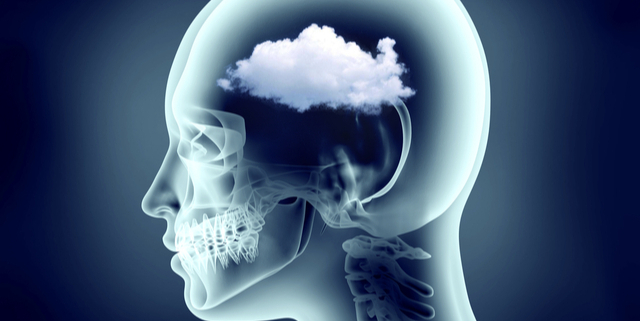7 Ways to Decrease Your Winter Arthritis Pain
It isn’t a myth.
During the winter, the number of people who seek treatment for arthritis surges.
And cold temperatures are to blame.
How colder temperatures bring more arthritis pain:
By Increasing Pain Sensitivity
In colder temperatures, the body’s pain receptors become more sensitive.
By Slowing Circulation
When temperatures are mild, the fluid circulating throughout our joints keeps them well-lubricated.
They can operate smoothly and pain-free or with less pain.
But as it gets colder, the fluid thickens and doesn’t circulate as well.
It’s like driving a car on motor oil manufactured for optimal performance during the spring and summer — it’s hard on engine parts in the winter.
By Making Tissue Swell
Barometric pressure is the denseness or weight of the air.
When winter hits, the air gets heavier, putting more pressure on the body’s tissues.
The tissues swell and cause added tension between joints.
Seven ways you can decrease winter arthritis pain:
1. Exercise
People tend to get less exercise in the winter.
But exercise increases your heart rate and increases circulation, which is good for your joints.
Swimming, stationary biking, elliptical training, and other low-impact exercises can help decrease joint pain.
2. Drink Enough Water
It’s easy to forget to drink enough in the winter because you don’t sweat.
In addition to the many adverse health effects, research suggests dehydration can make you more sensitive to pain.
3. Use Heat Therapy
Try to get your hands (And the rest of you!) on all things heated in the winter.
Heated packs, electric blankets, saunas, hot tubs, heated pools – it’s all soothing for the joints.
4. Take Vitamin D
The sun is the body’s natural source of vitamin D, and people tend to get less sun exposure in the winter.
Vitamin D deficiency increases your risk for osteoarthritis and might increase sensitivity to arthritis pain.
5. Get Enough Omega 3s
Eating enough fish rich in omega 3 fatty acids such as salmon and taking omega 3 supplements may decrease joint inflammation.
6. Take OTC Pain Medicine
Sometimes you need to knock out a pain flare-up.
Non-steroidal anti-inflammatories such as aspirin and ibuprofen can provide temporary relief.
7. Enjoy A Massage
They’re relaxing, and they feel great.
A natural alternative to drug and clinical treatments, massage can decrease arthritis pain when maintained for months.
Get Treatment for Winter Arthritis Pain at Texas Pain Physicians
Being armed with ways to lessen your arthritis pain during the winter season can help a lot!
But if you continue to experience pain and discomfort that interferes with your life, it may be time to see a pain specialist.
Our doctors can give you treatments and lifestyle strategies to relieve your arthritis pain.
Call Us Today!
To find out more, give us a call at (972) 636-5727 or reserve an appointment online.
Get Lasting Relief from Migraines and Other Headaches with Trigger Point Injections
Throbbing pain in your head can distract you from everything.
You need quick but lasting relief from migraines and other types of headaches.
Trigger point injections are a safe, non-invasive treatment that can provide that relief.
What are trigger points?
Often called “muscle knots” or just “knots,” trigger points are painful knots of muscle tissue.
They may or may not be visible as lumps on the skin surface.
What causes them?
Trigger points form when muscles don’t relax. The causes for lack of muscle relaxation include:
- inadequate exercise
- performing repetitive mechanical tasks
- lower limb mechanical asymmetry (different leg lengths)
- joint disorders (arthritis, bursitis, gout)
- poor sleep quality
- vitamin deficiencies
How they cause migraine pain.
Trigger points are a common cause of tension headaches, and they can make headache disorders such as migraines worse.
They produce what’s known as ‘referred pain,’ which is pain in other areas of the body.
When trigger points form in the muscles of the head, neck, and shoulder, they can press on nerves, causing headaches and making migraines worse.
How trigger point injections provide migraine pain relief.
Trigger point injections are usually injections straight into muscle knots to release muscle tension.
Typically, a trigger point injection includes a mixture of saline and a local anesthetic such as lidocaine.
The anesthetic reduces or eliminates headache pain by blocking pain receptors surrounding the muscle’s nerves that send pain signals to the brain.
When inflammation is present, the doctor may use a corticosteroid dose to reduce the swelling and pain.
What is a trigger point injection like?
Depending on the number of trigger points, you may need more than one injection.
An injection can reduce or prevent headache pain for up to several weeks.
Fast, lasting pain relief!
One injection provides immediate relief from migraines and tension headaches.
The procedure only takes a few minutes and can address more than one muscle knot.
You can have more than one injection session (as needed), and the relief can last for weeks.
It may take several sessions to experience sustained relief.
Are Trigger Point Injections for You?
You are a strong candidate for trigger point injections if you suffer from headaches due to muscle knots.
But this treatment doesn’t work for everyone.
Some people are allergic to anesthetics, and some don’t experience relief from the injections.
Expert Headache Treatment in Texas
If you suffer from migraines, tension headaches, or other types of headache pain, Texas Pain Physicians can help.
Our pain specialists will recommend the best treatment and get you back to your routine.
Call Today!
To find out more or make an appointment at one of our Houston, Dallas, San Antonio, or other locations, please call us at (972) 636-5727 or book an appointment online.
Facet Block Injections and Nerve Block Injections for Long-Term Pain Relief
You may be living with pain from an injury, disorder, or disease.
Good and bad days come and go.
But even when the pain goes away, you can count on it to return – month after month, year after year.
You could spend a lot of time trying DYI and non-traditional therapies and treatments until you start finding relief.
Or you could visit a pain management doctor.
Pain Management Injections
Pain management doctors or pain specialists are trained to diagnose chronic pain conditions and apply the most effective minimally-invasive pain relief procedures.
Steroid injection is one of their simplest methods for relieving muscle, joint, and nerve pain.
Two of the most common injections are nerve block and facet joint injections.
The type that pain specialists choose depends on the location and source of your pain.
The Benefits of Pain Management Injections
- safe and effective
- minimally invasive (non-surgical)
- long-term pain relief (up to several months or longer)
Facet Joint Injections
The facet joints connect the spine’s bones and are found in the neck, chest, and back at each vertebral level.
Pain specialists use facet joint injections (also known as facet blocks) to discover the source of your pain or treat pain by reducing inflammation in the spine’s joints.
What Facet Joint Injections Treat:
- back pain due to injury
- arthritis damage in facet joints
- stress on the spine
Nerve Block Injections
Unlike facet blocks, nerve block injections can help pain specialists identify the source of nerve pain in the legs and feet or treat nerve pain in the head.
What Nerve Blocks Treat:
- A lumbar sympathetic block can treat nerve pain symptoms in the feet and legs.
- An occipital nerve block can treat nerve pain in the scalp and back of the head.
Injection Procedures
For a nerve block or facet joint injection procedure, a doctor or nurse administers two injections (a local anesthetic and steroid) into the designated area.
Within minutes of the anesthetic injection, you may notice significant pain relief.
Facet blocks and nerve blocks pain-relief injections are safe and highly unlikely to cause complications compared to surgical alternatives.
Get Long-Term Pain Relief in Texas
Are you tired of taking pain medication every day to keep up with your chronic pain?
We can give you relief that lasts for weeks or months.
To find out how pain management injections may help you, give Texas Pain Physicians a call at (972) 636-5727 or book your appointment online.
Treating Your Chronic Pain May Get Rid of Your Brain Fog
Do you suffer from a chronic pain disorder?
Is your pain accompanied by memory problems, difficulty focusing, and an inability to concentrate?
Chronic Pain May Be to Blame
Most people experience chronic pain during their lifetimes.
And cognitive dysfunction, known as brain fog, is among chronic pain’s symptoms.
If you get effective treatment for your chronic pain, you may also see an improvement in your symptoms.
Common Chronic Pain Disorders Linked to Brain Fog
- Fibromyalgia (“fibro fog” is a term for cognitive disorder linked to fibromyalgia)
- Cluster and Migraine headache disorders
- Sciatica
- Neuropathy
- Complex Regional Pain Syndrome (CRPS)
- Arthritis
- Failed Back Surgery Syndrome
- Hypothyroidism
- Many more!
Research shows that:
- People generally don’t remember as well when they have chronic pain.
- Chronic pain conditions are linked to anxiety and depression, mental disorders that contribute to brain fog.
Treating Chronic Pain to Improve Symptoms
Brain fog is a symptom of many chronic pain disorders.
When it is, the key to improving the symptoms is treating the chronic pain.
But it’s critical that you visit a pain specialist who can give you an accurate diagnosis, followed by effective treatment.
Treating “The Whole You”
Often, pain specialists coordinate their treatments with other health professionals, including:
- mental health professionals
- physical therapists
- general practitioners
This way, you get treatment as a whole person.
Combined, these doctors treat you based on a thorough examination of your physical and mental health, as well as medications and lifestyle.
Common Treatments for Chronic Pain
1. Lifestyle Changes
Simple lifestyle changes such as maintaining a consistent sleep regimen, being more physically active, and eating healthier can lessen chronic pain symptoms.
2. Non-Traditional Treatments and Therapies
Chiropractic, acupuncture, yoga and meditation, and other non-traditional treatments can provide relief.
3. Medications
Over-the-counter and prescription medications can reduce chronic pain, too.
But opioid pain medications may cause brain fog and lead to dependence, so pain specialists usually limit their use or don’t recommend them at all.
4. Interventional Procedures (at pain specialist practices)
Pain specialists have training in treating pain beyond medical school.
They have the expertise to pinpoint your pain problem and recommend procedures proven to give long-term relief.
Visit the Pain Management Specialists at Texas Pain Physicians (TPP)
Untreated chronic pain can put your life on hold.
If you suffer from brain fog and think chronic pain may be causing it, a friendly TPP doctor specialized in pain treatment can help.
We will accurately diagnose the condition and craft a unique pain management plan that fits you.
Please call us at (972) 636-5727 or book your appointment online today.
Lumbar Arthritis: What It Is and How Pain Specialists Treat It
The most common area for spinal arthritis is the lower back (the lumbar spinal region).
And the most common symptoms are pain and stiffness, though symptoms can include creaking sounds, muscle spasms, and decreased range of motion.
Let’s look at the three types of lumbar arthritis and how pain specialists treat them.
Lumbar Osteoarthritis
The most common form of arthritis, lumbar osteoarthritis is caused by the breakdown of cartilage that protects the lower spine joints.
The cartilage breakdown leaves the nerves seated in the spine exposed.
As the spinal bones rub and grind together, the joints wear out, creating smooth, bony lumps known as bone spurs.
The bone spurs press against the exposed nerves, which causes pain.
Lumbar Spondyloarthritis
Spondyloarthritis is a group of diseases characterized by inflammation at the attachment sites of the tendons and ligaments to the spine.
The disease can also attack the arms and legs, but the most common symptom is back pain.
There are many variants of spondyloarthritis with similar pain symptoms, including psoriatic arthritis and reactive arthritis.
Lumbar Osteoporosis
The body is continually forming new bone to replace old, broken-down bone.
Osteoporosis occurs when the body stops forming new bone fast enough to replace the broken down bone, resulting in lost bone mass.
Lumbar osteoporosis causes weakness and pain, and as bone mass decreases, bones become more vulnerable to injury.
Home and Prescription Treatments
Doctors usually recommend home remedies like losing weight, exercise, physical therapy, prescription and non-prescription muscle relaxants, and over-the-counter pain relief medication to manage lumbar arthritis pain.
Specialist-Driven Treatments
When the above treatments don’t provide the expected relief, pain specialists often recommend outpatient procedures.
Corticosteroid Injections
Caudal epidural injections can relieve the pain caused by narrowed disc space resulting in pressure on the nerves as they exit the spinal canal.
The procedure typically involves two injections in the lower back – one of steroid and one of anesthetic.
The anesthetic numbs the pain relief for a few hours, and the steroid reduces the inflammation, relieving pain for up to several months or longer.
Transcutaneous Electrical Nerve Stimulation (TENS)
TENS therapy uses a painless, low-voltage electrical current to treat pain.
The procedure involves attaching sticky pads or electrodes on the ends of leads to the skin on the lower back area and administering electrical current.
Radiofrequency Ablation
This procedure stops lumbar arthritis pain by burning the nerve fibers carrying pain signals to the brain.
A single procedure can eliminate pain for one to two years, though it may take around two weeks to experience pain relief.
Lumbar Arthritis Treatment at Texas Pain Physicians
At TPP, we specialize in treating and managing pain.
We can develop a customized treatment plan for your lumbar arthritis or other arthritis.
We offer same-day appointments, advanced medical technology, and exceptional patient care.
Give us a call today or schedule your appointment online.
6 Benefits of Implanted Intrathecal Pain Pumps for Pain Relief
Pain can keep you from doing things that lift your spirits.
Things like playing with the grandkids, working out, and going for walks in freshly fallen snow.
Imagine being able to control your pain with the push of a button.
That’s what an intrathecal pain pump can do for you.
Doctors have been recommending pain pumps for cancer pain, pain from injuries, and other kinds of chronic pain for over 40 years.
Here are six ways pain pumps can help you:
1. Controlled pain relief for up to five years.
It takes time for pills and caplets to digest and pass through the blood barrier to provide pain relief.
And bringing medication with you everywhere is not always convenient or possible.
With an intrathecal pump, you can press a button for immediate pain relief at any time and increase or decrease the dose as needed.
Intrathecal pain pumps are implanted under the skin in a one-time procedure.
They can dispense pain relief on call for five years before needing replacement.
2. 24/7 pain relief.
Pain medication eventually wears off, and sometimes, you may forget to take it.
Wouldn’t it be nice to sleep through the night and wake up in the morning pain-free, without needing to reach for pills?
You can set your pain pump to dispense pain relief all day and all night.
3. No side effects or risk for dependence.
You have to take much higher doses of oral pain medication because it passes through the digestive system before providing pain relief.
Higher doses can cause short and long-term side effects such as kidney or liver failure and constipation.
But with pain pumps, medication is delivered directly to the pain site through your nervous system at a much lower dose.
This way, there’s no pleasurable high and no risk for dependence (unlike opioids and other medications).
4. The procedure is reversible.
Unlike invasive surgeries intended to correct pain conditions, the pump implant procedure makes no permanent changes to your body.
And if you decide it isn’t working for you, you can have the pump removed at any time.
5. Can test it before having the implant procedure.
You can take a “test drive” or try out a pain pump to see whether it gives you the pain relief you need.
The trial pump involves a health professional installing a temporary pump system on your body.
It’s a lot like the permanent system, and you can try it for a few days.
The faster alternative is a trial injection of a single dose of pain medication administered through a small catheter in the intrathecal space in your lower back.
If it brings relief, you may want to get a pain pump.
6. This therapy has a high satisfaction rate.
In 2018 Nura Clinics ran a survey of 600 patients who had implanted pain pumps to relieve chronic pain.
Over 74% said they experienced “good to excellent pain relief.”
Over 90% said they experienced at least partial pain relief.
Could a pain pump be for you?
Have you tried other pain therapies and treatments that haven’t worked?
Our caring team of pain specialists can help you decide whether intrathecal pain pump therapy is right for you.
Please give Texas Pain Physicians a call today at (972) 676-5727 or book your appointment online.






